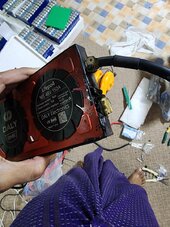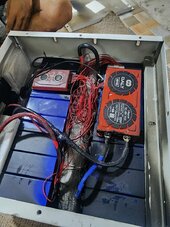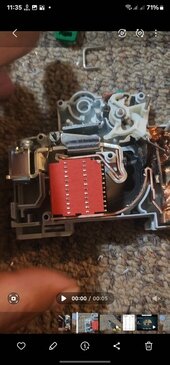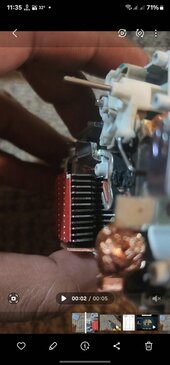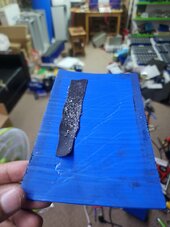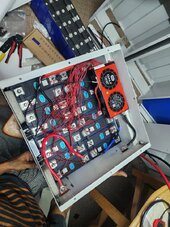EDIT : All the 16 FETS in the Inverter got blown. And replaced. The setup seems to be running fine with a new BMS at the moment.
So this happened today.
Inverter is MUST 5.5kW
Battery LFP 51.2V 100Ah (DIY)
BMS Daly Smart BMS 150A
ONCCY DC Breaker 2Pole 125A(non-polarized)
The breaker tripped. He tried to switch it to ON again but breaker tripped again. There was smell of burning from battery pack. So he called me.
When i arrived, I immediately disconnected all wires between inverter, breaker and battery, and then checked the battery. The foams used as top cover protection on the battery got heated and burned.
The BMS was extremely hot that it burned my finger as soon as i touched it.
BMS is still ON. I can see the cell voltages and stuff on the LCD display of battery.
Every wire connected between the bms and the cells are all fine. There is not a single sign of a short-circuit burn. The only thing happened is the BMS got very very heated and burned the protective foam around it.
Now onto the breaker,
The breakers contacts are fused. So it is CLOSED and cannot be OPEN by the switch.
Somehow this blown the mosfets of the inverter and caused error 09 on the Inverter.
I ended up swapping a new bms for the pack.
What i am wondering is what caused what in this event. Again i cannot find any sign of a short-circuit. All contact points and terminals, lugs are all in very clean condition. Not even a single mark of burn or anything.
Also the BMS did not shutdown when it should as it is way beyond overheating. It melted its own rubber coating.
The battery pack is less than a month old. So is the DC breaker.
what could be the root cause for this?
EDIT :
The system has been working fine for about 20days.
So this happened today.
Inverter is MUST 5.5kW
Battery LFP 51.2V 100Ah (DIY)
BMS Daly Smart BMS 150A
ONCCY DC Breaker 2Pole 125A(non-polarized)
The breaker tripped. He tried to switch it to ON again but breaker tripped again. There was smell of burning from battery pack. So he called me.
When i arrived, I immediately disconnected all wires between inverter, breaker and battery, and then checked the battery. The foams used as top cover protection on the battery got heated and burned.
The BMS was extremely hot that it burned my finger as soon as i touched it.
BMS is still ON. I can see the cell voltages and stuff on the LCD display of battery.
Every wire connected between the bms and the cells are all fine. There is not a single sign of a short-circuit burn. The only thing happened is the BMS got very very heated and burned the protective foam around it.
Now onto the breaker,
The breakers contacts are fused. So it is CLOSED and cannot be OPEN by the switch.
Somehow this blown the mosfets of the inverter and caused error 09 on the Inverter.
I ended up swapping a new bms for the pack.
What i am wondering is what caused what in this event. Again i cannot find any sign of a short-circuit. All contact points and terminals, lugs are all in very clean condition. Not even a single mark of burn or anything.
Also the BMS did not shutdown when it should as it is way beyond overheating. It melted its own rubber coating.
The battery pack is less than a month old. So is the DC breaker.
what could be the root cause for this?
EDIT :
The system has been working fine for about 20days.
Attachments
Last edited:



